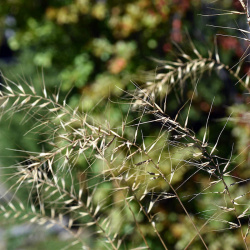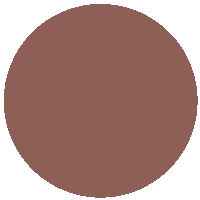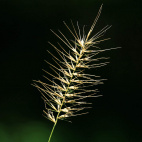Color
Availability
USDA Zone
Region
Type
Duration
Season
Germination
Soil
Sunlight
Height
Narrow Your Search
Color
Availability
USDA Zone
Region
Type
Duration
Season
Germination
Soil
Sunlight
Height
US Native Grass Seeds
The species on this page are not all technically classified as grasses, but the average gardener would probably call them "grass". Here you will find a variety of seeds of native grasses, sedges, reeds, and rushes. You might not think of grass as being as beautiful as flowers, but some of these wild grasses really are beautiful in their own way. Many of the native prairie grasses turn color in autumn, and the rusty bronze color of the stems adds a real fall aura to the planting. Winter birds benefit from the wild grass seeds, and small animals use the thick undergrowth for cover. The biomass of the grass is also the primary source for fuel when a prairie planting undergoes a planned burn.
-
 Bottlebrush Grass Seeds
Hystrix patula
Its distinctive seed heads look like a bottlebrush, making this species popular as an ornamental grass. In the wild, it is found growing in wooded and shaded areas, but can also be grown in full sun if need be. This grass is a cool-season perennial grass and ripens to a straw color in the summer.Quick Viewx
Bottlebrush Grass Seeds
Hystrix patula
Its distinctive seed heads look like a bottlebrush, making this species popular as an ornamental grass. In the wild, it is found growing in wooded and shaded areas, but can also be grown in full sun if need be. This grass is a cool-season perennial grass and ripens to a straw color in the summer.Quick ViewxBottlebrush Grass Seeds
Hystrix patula
Its distinctive seed heads look like a bottlebrush, making this species popular as an ornamental grass. In the wild, it is found growing in wooded and shaded areas, but can also be grown in full sun if need be. This grass is a cool-season perennial grass and ripens to a straw color in the summer.
$3.48 Pkt - $12.65 / Oz
The species on this page are not all technically classified as grasses, but the average gardener would probably call them "grass". Here you will find a variety of seeds of native grasses, sedges, reeds, and rushes. You might not think of grass as being as beautiful as flowers, but some of these wild grasses really are beautiful in their own way. Many of the native prairie grasses turn color in autumn, and the rusty bronze color of the stems adds a real fall aura to the planting. Winter birds benefit from the wild grass seeds, and small animals use the thick undergrowth for cover. The biomass of the grass is also the primary source for fuel when a prairie planting undergoes a planned burn.




